Top Rankings
Interboro School District ranks among the top 20% of public school district in Pennsylvania for:
Category
Attribute
Diversity
Most diverse schools (Top 1%)
Community Size
Largest student body (number of students) (Top 1%)
For the 2025 school year, there is 1 public preschool serving 234 students in Interboro School District.
ÎÛÎÛÂþ» Preschools in Interboro School District have a diversity score of 0.62, which is less than the Pennsylvania public preschool average of 0.70.
Minority enrollment is 41% of the student body (majority Black and Hispanic), which is less than the Pennsylvania public preschool average of 55% (majority Black and Hispanic).
Overview
This School District
This State (PA)
# Schools
6 Schools
328 Schools
# Students
3,357 Students
147,214 Students
# Teachers
265 Teachers
11,259 Teachers
Student : Teacher Ratio
13:1
13:1
District Rank
Interboro School District, which is ranked within the bottom 50% of all 675 school districts in Pennsylvania (based off of combined math and reading proficiency testing data) for the 2021-2022 school year.
The school district's graduation rate of 90% has decreased from 92% over five school years.
Overall District Rank
#422 out of 684 school districts
(Bottom 50%)
(Bottom 50%)
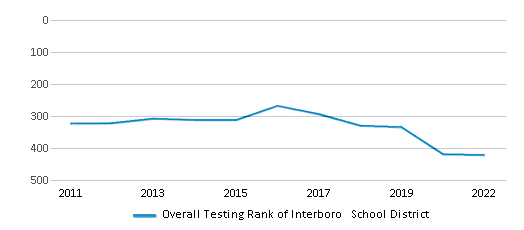
Math Test Scores (% Proficient)
28%
36%
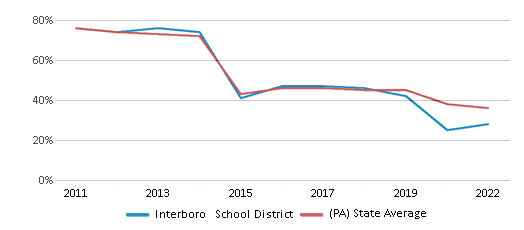
Reading/Language Arts Test Scores (% Proficient)
54%
55%
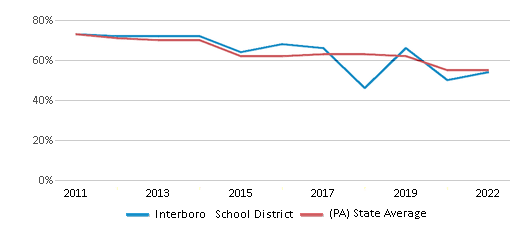
Science Test Scores (% Proficient)
61%
57%
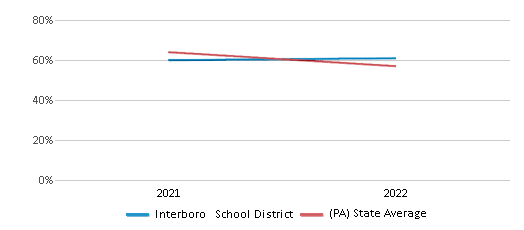
Graduation Rate
90%
87%
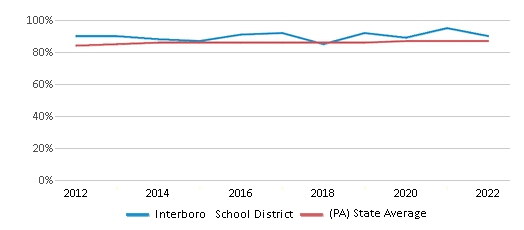
Students by Ethnicity:
Diversity Score
0.57
0.70
# American Indian Students
15 Students
267 Students
% American Indian Students
1%
n/a
# Asian Students
198 Students
4,636 Students
% Asian Students
6%
3%
# Hispanic Students
246 Students
31,371 Students
% Hispanic Students
7%
21%
# Black Students
547 Students
35,365 Students
% Black Students
16%
24%
# White Students
2,111 Students
65,860 Students
% White Students
63%
45%
# Hawaiian Students
5 Students
108 Students
% Hawaiian Students
n/a
n/a
# Two or more races Students
235 Students
9,607 Students
% of Two or more races Students
7%
7%
Students by Grade:
# Students in PK Grade:
-
8,317
# Students in K Grade:
234
24,393
# Students in 1st Grade:
244
20,742
# Students in 2nd Grade:
235
21,144
# Students in 3rd Grade:
237
18,141
# Students in 4th Grade:
267
18,415
# Students in 5th Grade:
246
14,862
# Students in 6th Grade:
271
6,743
# Students in 7th Grade:
277
4,529
# Students in 8th Grade:
273
4,525
# Students in 9th Grade:
263
1,699
# Students in 10th Grade:
265
1,361
# Students in 11th Grade:
256
1,242
# Students in 12th Grade:
289
1,101
# Ungraded Students:
-
-
District Revenue and Spending
The revenue/student of $22,130 in this school district is less than the state median of $23,696. The school district revenue/student has stayed relatively flat over four school years.
The school district's spending/student of $21,193 is less than the state median of $23,119. The school district spending/student has stayed relatively flat over four school years.
Total Revenue
$74 MM
$39,541 MM

Spending
$71 MM
$38,578 MM
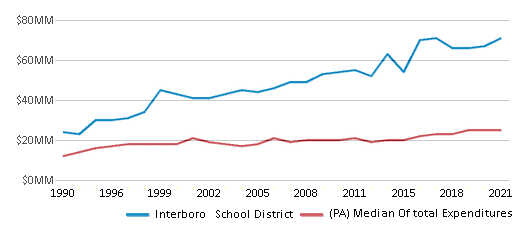
Revenue / Student
$22,130
$23,696
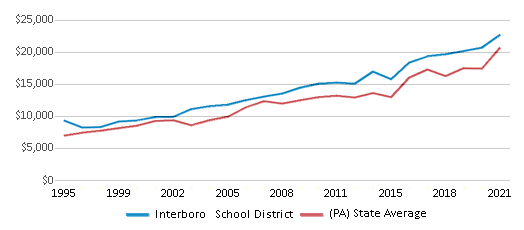
Spending / Student
$21,193
$23,119

Best Interboro School District ÎÛÎÛÂþ» Preschools (2025)
School
(Math and Reading Proficiency)
(Math and Reading Proficiency)
Location
Grades
Students
Rank: n/an/a
900 Washington Avenue
Prospect Park, PA 19076
(610) 957-5401
Prospect Park, PA 19076
(610) 957-5401
Grades: K
| 234 students
Recent Articles

Year-Round Or Traditional Schedule?
Which is more appropriate for your child? A year-round attendance schedule or traditional schedule? We look at the pros and cons.

Why You Should Encourage Your Child to Join a Sports Team
Participating in team sports has a great many benefits for children, there is no doubt. In this article you will learn what those benefits are.

White Students are Now the Minority in U.S. ÎÛÎÛÂþ» Schools
Increasing birth rates among immigrant families from Asia and Central and South America, combined with lower birth rates among white families, means that for the first time in history, public school students in the United States are majority-minority. This shift in demographics poses difficulties for schools as they work to accommodate children of varying language abilities and socio-economic backgrounds.





